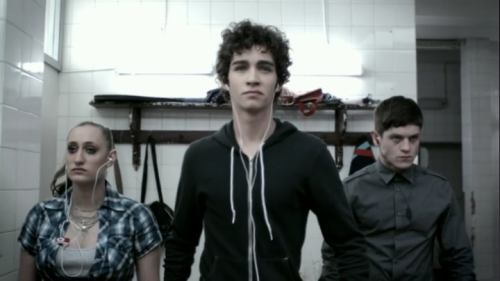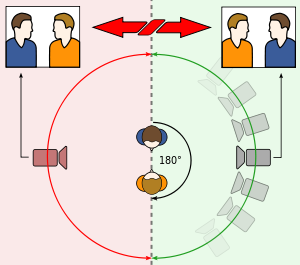Evaluation
This is the final video for my group’s preliminary task. In the construction of our film we focused on demonstrating our film techniques, including match-on-action, over the shoulder shot, 180 degree rule and shot reverse shot. I believe that my group consisting of Yusuf, who acted and made the floor plans, Nile who was in charge on set design and editing, and me the camera man, we able to execute our task well as we delegated tasks well and produced a good end product. We used match-on-action, a continuity editing technique, to show our characters moving and make our film easily interpretable to the audience. As well as this, we also used an Over the shoulder shot and shot reverse shot when showing dialogue between the two characters. This was executed well but we had to be careful to acknowledge the 180 degree rule. One problem we encountered during the construction was continuity. We only had a limited amount of time to film our preliminary task so had to stick to a tight schedule. However, after filming we realised that one of our shots had to be re shoot But this was the next day and our actor was wearing different clothes consequently, in order to preserve good continuity we had to re shoot the whole footage. However, this can be viewed as a good thing because we were able to get better quality shots and acknowledged any errors we had made before.
As well as camera techniques, in our movie we also incorporated various camera angles. For Example, we used medium, medium close ups and close up shots and Point of View shots. We also used a dolly shot, which we executed by placing the camera on top of a school chair and wheeling along the camera in the scene which has Yusuf walking down a corridor. However, in doing this we encountered a problem, in view of the fact when pushing the chair, the camera wasn't stationary therefore our shot became shaky which wasn't our intention. We were going to use a CCTV shot, but didn't include it in the final production as we acknowledged that it would be hard to merge that and the match on action well. This was probably the most difficult shot because we didn't have anything to place the camera onto, I had to stand on a chair, holding the camera above Nile's head in order to film it which took us numerous attempts.
After we finished filming the video we uploaded the video onto the computer and then opened it on iMovie so we could edit it. The film was edited by Nile and Yusuf with input from all three of us regarding length of cuts, what to leave out, choice of music etc. A problem we encountered during editing was deciding when to cut scenes so we could display match-on-action as effectively as possible.











